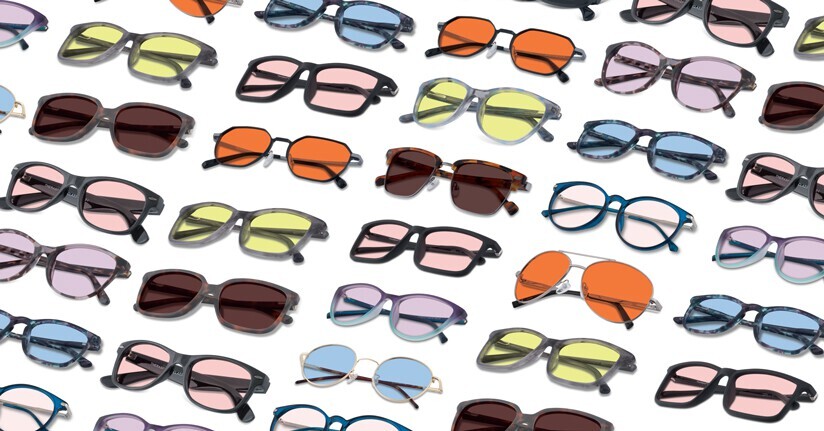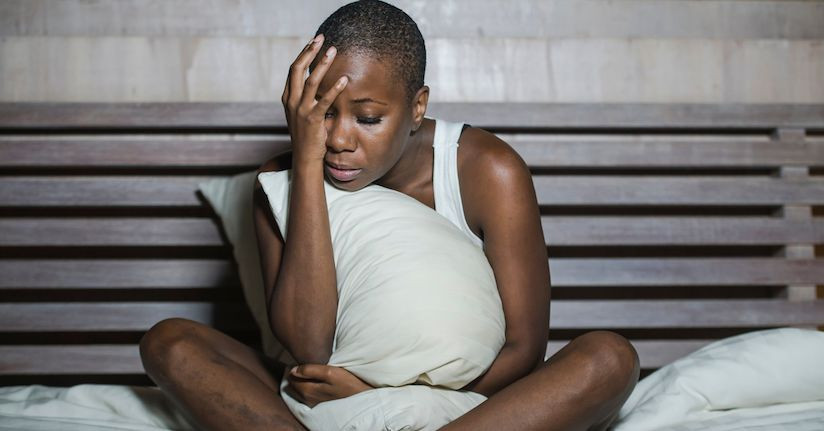Living with Photophobia Isn't Easy (And Here's Why)
We spend much of our time highlighting the how and why of photophobia—what causes it, how it affects different conditions—but we cannot overlook an equally important factor: its impact on our lives. This strong sensitivity to light changes the way we function, from how we engage in our relationships to our productivity on the job (if we are even able to work). We want to focus on five reasons that living with photophobia can be a challenging experience.
Special note: Our purpose behind writing this article is not to further the struggles and pain for those with photophobia and light sensitivity, but instead to bring awareness to its difficulties and hopefully bust the stigma that many with the symptom face. If you identify with the experiences included in this article, we encourage you to share it with others to help communicate what you have to endure. And if you need help in finding relief for your light sensitivity, check out our tips here.
1. Your senses are hyper-charged just about all the time
"[The] photophobia gets worse and your eyes get used to being in the dark. I'm at the point that it's become very realistic that soon I'll have no use for my sunglasses whatsoever and can no longer use my eyes. Every bit of light hurts. I feel sicker everyday. I sleep around 9.5 hours to feel just a little refreshed. I go to sleep with pain. I wake up with pain." (via photophobeing/reddit)
Light sensitivity does not just begin and end during a migraine attack or a fibromyalgia flare. For many, their eyes and brains struggle to process light 24 hours a day, 7 days a week. Research consistently shows that people with neurological disorders like migraine or post-concussion syndrome have lower thresholds for light, which makes them susceptible to experiencing photophobia between symptomatic periods or even as a triggering factor for their symptoms. This makes it difficult for them to feel any respite from it. One thing’s for sure: if these 'super senses' were a superhero power, most would gladly trade it in because of the discomfort it causes.
2. You can be all about that cave life
"My husband essentially turned our entire house into a migraine safe cave for me. [He] bought insulation panels that he cut to fit inside the window frames to block out light for almost the entire house! It was amazing and helped tremendously. However, this was not his first attempt at trying to make our home more light sensitive friendly for me. (via Amanda Workman / migraine.com)
During particularly brutal light-sensitive episodes, it is natural to want to find the darkest space you can find to get away from the intensity. The “dark room” is a typical safe haven for people with migraine and post-concussive photophobia; if complete retreat is not an option, then many turn to dark sunglasses so they can at least be semi functional. Although neither of these are great options because of the secondary symptoms they can accrue (e.g. worsening light sensitivity and/or anxiety, depression), it is understandable that patients want to remove themselves from the lighting that sets off their heightened senses.
3. Every appointment on your calendar is "tentative"
"I'm 18 and have had this light problem for about 3 years. It started when I'd go out with my friends at night. Now it's even worse. I can't go out of my room without sunglasses. My eyes ache constantly. I can barely stand any light. I wear my sunglasses day and night, indoors and outdoors. It's gotten to a point where I'm afraid to go out with my friends and even to work for fear of having an attack and not being able to drive home. I can't sit through movies or play laser tag or go to clubs." (via anonymous user / ourhealth.com)
One of the more heartbreaking yet all-too-common descriptions of living with photophobia centers on the activities that people have to forego. And they often represent the things the rest of us take for granted: going to the shopping mall or grocery store; working in an office setting with fluorescent lights; spending time with friends at the movie theater or a local restaurant. Even when patients are able to go out, they often have to meticulously plan the experience by identifying possible triggers in the environment and coordinating an escape plan if their light sensitivity symptoms flare up.
As a side note, these are the stories that affect our team at TheraSpecs the most. It is also why our core mission is to help people with photophobia get out of the dark and back to their lives with the help of our specialty-tinted glasses. And it is why we celebrate those happy moments for our customers on our blog and social media pages when they do.
4. You have to deal with those who just don’t understand
"Since [Lyme Disease] can cause so many different symptoms, those living with it have to learn how to cope and make it through their days. For me, I often have to wear sunglasses indoors because the light sensitivity is too much — people often think I am hungover, but in reality, I am just trying to get through the work day without my eyes burning. It is hard when others don’t understand what you are going through or why you are acting a certain way." (via Cassidy Colbert / themighty.com)
Light sensitivity, and the conditions that cause it, are subject to personal and professional stigma. Others simply cannot relate to the invisible nature of this symptom, and therefore all they can “see” are the after effects—the sunglasses or lightly-tinted shades indoors, the missed activities or work obligations, the dark room or cocoon-style therapy. They might think you are trying to present yourself as a celebrity or a “diva” or consider you a liability or wonder if you are outright faking it. This only serves to compound the pain, guilt and other issues that come from having a light-sensitive disorder. It also reinforces the importance of patient advocacy through public awareness efforts, professional accommodations for light sensitivity, and increasing access to support resources. If you are struggling, we recommend taking advantage of these resources to connect with others and hopefully find additional ways to cope with your photophobia.
5. You biohack your environment to get through the day
"I am really sensitive to light, especially certain types of light…ok, never mind… all types of light. As the days are getting shorter I’ve been re-arranging the light configuration in my living room trying to find a setup that will provide some light without aggravating said light sensitivity. Over the last few years I’ve found a few things that seem to help me deal with the way light affects me, and I thought I’d share those with you: Use indirect lights; go tinted [for car windows]; use sun visors; use blue light blockers; and get rosy [with specially tinted lenses]." (via Julie Ryan / countingmyspoons.com)
Obviously, it would be great if there were a straightforward approach to treating light sensitivity, but instead people have to get creative in order to dodge the bright light bullet. This actually makes them one of the most resilient groups we have come across. They adjust brightness levels on their digital screens, use color-filtering mobile apps or other smartphone hacks, try tinted photophobia glasses for indoors, experiment with different light bulbs or arrangements at home or in the office, and countless other methods that help make life with light sensitivity a little bit easier. Of course, there is no perfect mix for every person, so you have to find what works best for you. But with the enduring spirit and biohacking skills of many people with photophobia, we know you have the ability to discover those tools that can make a difference in how you manage the symptom.
And if you need some inspiration, click on the button below for a few ideas to reduce your photophobia.
More resources for photophobia:
The Ultimate Guide to Light Sensitivity and Photophobia
Special Report: The Impact of Light Sensitivity
Light Sensitivity, Photophobia: Facts and Statistics

TheraSpecs® Glasses for Light Sensitivity
Find the glasses that fit your needs and lifestyle, and stay protected from screens, fluorescents, unwanted blue light, sunlight, flashing lights, and more.
Shop Now



